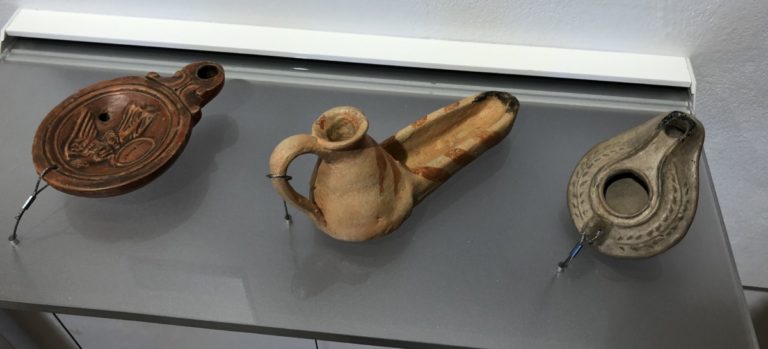The ethical considerations of creating 3D data of human remains need to be considered, the researchers argue in a paper entitled “Standardisation in 3D Geometric Morphometrics: Ethics, Ownership and Methods.” They point to the growing number of resources such as MorphoSource, Sketchfab and Digitised Diseases, which offer access to digital human bones among other scans.
“The key to understanding the ethical requirements of 3D data, arguably lies in defining how 3D data differ from physical human remains and other digital data formats,” the researchers state. “Results from a survey by indicated that researchers and collection managers and curators generally considered 3D data to lie between photographic data and the original object with regard to ethics and ownership. However, more work is needed in order to determine what this middle ground between photographs and skeletal remains would entail when considering the ethics, ownership, and use of 3D digital data.”
While 3D digital images are typically considered “owned” by the person who created them, there is a lack of consensus regarding scans of items of objects of cultural, religious and societal value which are generally not copyrighted. The researchers point to a case in which a 3D photogrammetry model was made of a Michelangelo statue on a college campus. The college petitioned for the scan to be taken down as the publisher had not sought the permission of the college or the sculptor. As the statue was not under copyright and was in a public place, however, no legislation prevented the online publication of the data.
The researchers argue that standards need to be implemented when it comes to the ownership of digital 3D data. MorphoSource, for example, states that before uploading and sharing data, individuals need to obtain permission from the curator or collection manager of the institute where the data was collected. Several museums have guidelines regarding photographs taken from their collections, but not regarding 3D data. Things get more complicated when you consider altered 3D data; are copyrights voided when an individual makes alterations to scans?
When human remains are involved, there are guidelines for museums regarding their storage, but not for 3D replicas.
“A common argument for scanning human remains is to allow repatriation requests to be honoured, while still keeping a digital copy of these data to be utilised for further research,” the researchers state. “Nevertheless, no research could be found in which the organisations and communities actively making repatriation requests were consulted with regard to their views on retaining 3D scans of human remains after repatriation.”
Controversy was caused when the artist Oliver Laric 3D scanned and 3D printed seven columns from the Old Summer Palace in Beijing. The prints are held in Norway, but they will be returned to China, as it has been argued that the work was an attempt to steal cultural heritage. This was only one case, however; again, there is no standardized guidance as to what constitutes cultural theft regarding 3D scanning and printing.
There is also the matter of error, whether it happens during the digitization process or during the extraction of data. How should errors be handled in reproducing human remains or cultural artifacts? At this time, no standards exist for this matter either.The researchers conclude that further discussions need to take place regarding a standardized approach to 3D data collection. First, however, more understanding is needed regarding how different institutions and cultures view 3D scans of human remains.
“These discussions need to be started, while the field is still developing, in order to avoid the problems that have already hindered archaeological research in the past due to the difficulty in comparisons across studies and to prevent results from losing their value due to a lack of standardisation,” they explain. “We therefore argue that cross-disciplinary research, involving anthropologists, archaeologists, bioethicists, and legal scholars, is needed to consider these ethical questions and to develop suitable guidelines of proper practice.”
Authors of the paper include Cara S. Hirst, Suzanna White, and Sian E. Smith.
Discuss this and other 3D printing topics at 3DPrintBoard.com or share your thoughts below.
Subscribe to Our Email Newsletter
Stay up-to-date on all the latest news from the 3D printing industry and receive information and offers from third party vendors.
Print Services
Upload your 3D Models and get them printed quickly and efficiently.
You May Also Like
Nikon SLM Solutions Sells SLM 500 to Primary Weapon Systems to Expand Suppressor Production
Primary Weapons Systems (PWS) is a Boise, Idaho-based manufacturer of suppressors, firearms, and related components. A subsidiary of Vigilant Gear and a sister company to aftermarket Glock slide manufacturer Lone...
3DPOD 261: Tooling and Cooling for AM with Jason Murphy, NXC MFG
Jason Murphy´s NXC MFG (Next Chapter Manufacturing) is not a generalist service; instead, the company specializes in making tooling. Using LPBF and binder jet, the company produces some of the...
HP and Firestorm Labs Form Partnership to Use Multi Jet Fusion 3D Printers in Deployable Factories
HP Inc., maker of a range of additive manufacturing (AM) solutions including the Multi Jet Fusion (MJF) ecosystem, has announced a partnership with Firestorm Labs, a developer of containerized, deployable...
3D Printing News Briefs, July 2, 2025: Copper Alloys, Defense Manufacturing, & More
We’re starting off with metals in today’s 3D Printing News Briefs, as Farsoon has unveiled a large-scale AM solution for copper alloys, and Meltio used its wire-laser metal solution to...



































